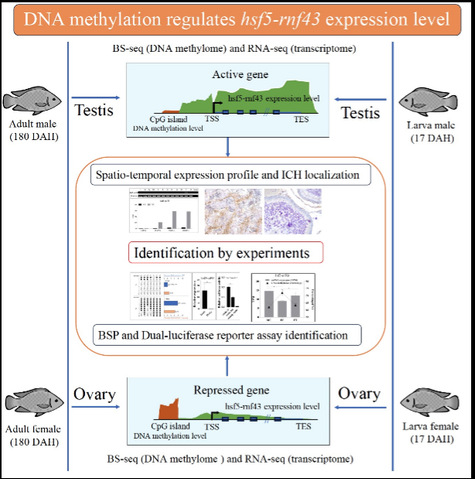Recently, Professors Zhao Jinliang and Chen Xiaowu from the College of Fisheries and Life Science have made discoveries in research on the molecular mechanism underlying the regulation of reproductive development in fish. Their research results have been published in iScience (Zhao Jinliang and Chen Xiaowu as the co-corresponding authors, and Shen Yawei and Jiang He as the co-first authors).
Tilapia mossambica exhibits a significant sexual dimorphism, with males growing approximately 45% faster than females. In this sense, clarifying the mechanism underlying the regulation of reproductive development in Tilapia mossambica and achieving precise sex control are of positive significance for increasing the proportion of male larval fish and promoting the development of the Tilapia mossambica industry.

This study takes the “New Gift” Tilapia mossambica bred by SHOU as its research object. On the basis of the genome-wide DNA methylation sequencing of Tilapia mossambica, this study detects the occurrence of gene fusion between hsf5 and rnf43, which gives rise to a new gene hsf5-rnf43. The fusion gene is specifically expressed in the testicles of Tilapia mossambica, which promotes their development.
The study also discovers that genomic DNA methylation regulates the sex-differentiated expression of the fusion gene hsf5-rnf43 during the early development of the gonads of Tilapia mossambica, and that it is influenced by high temperature during the temperature-sensitive period in the gonadal differentiation of Tilapia mossambica. hsf5 belongs to the family of heat shock protein (HSP) transcription factors, while rnf43 has the function of promoting cell growth and division. The fusion of the two may be an important mechanism underlying the temperature regulation of the germ cell development and sex differentiation of Tilapia mossambica.